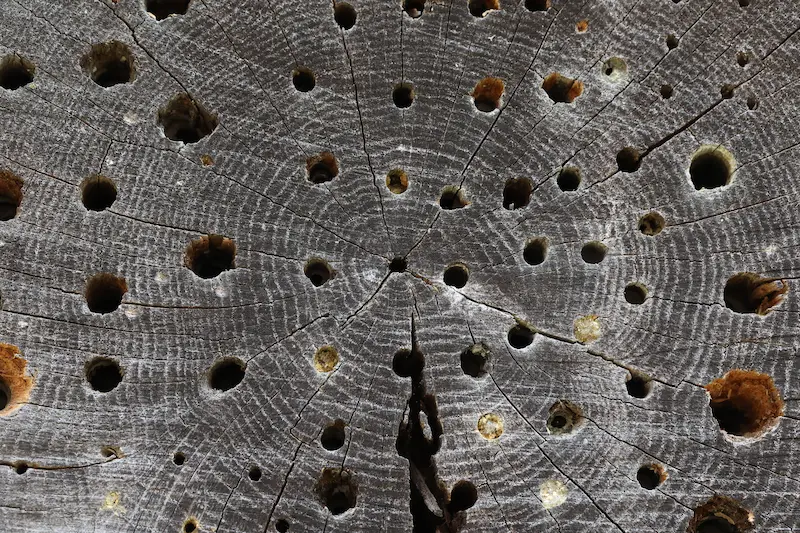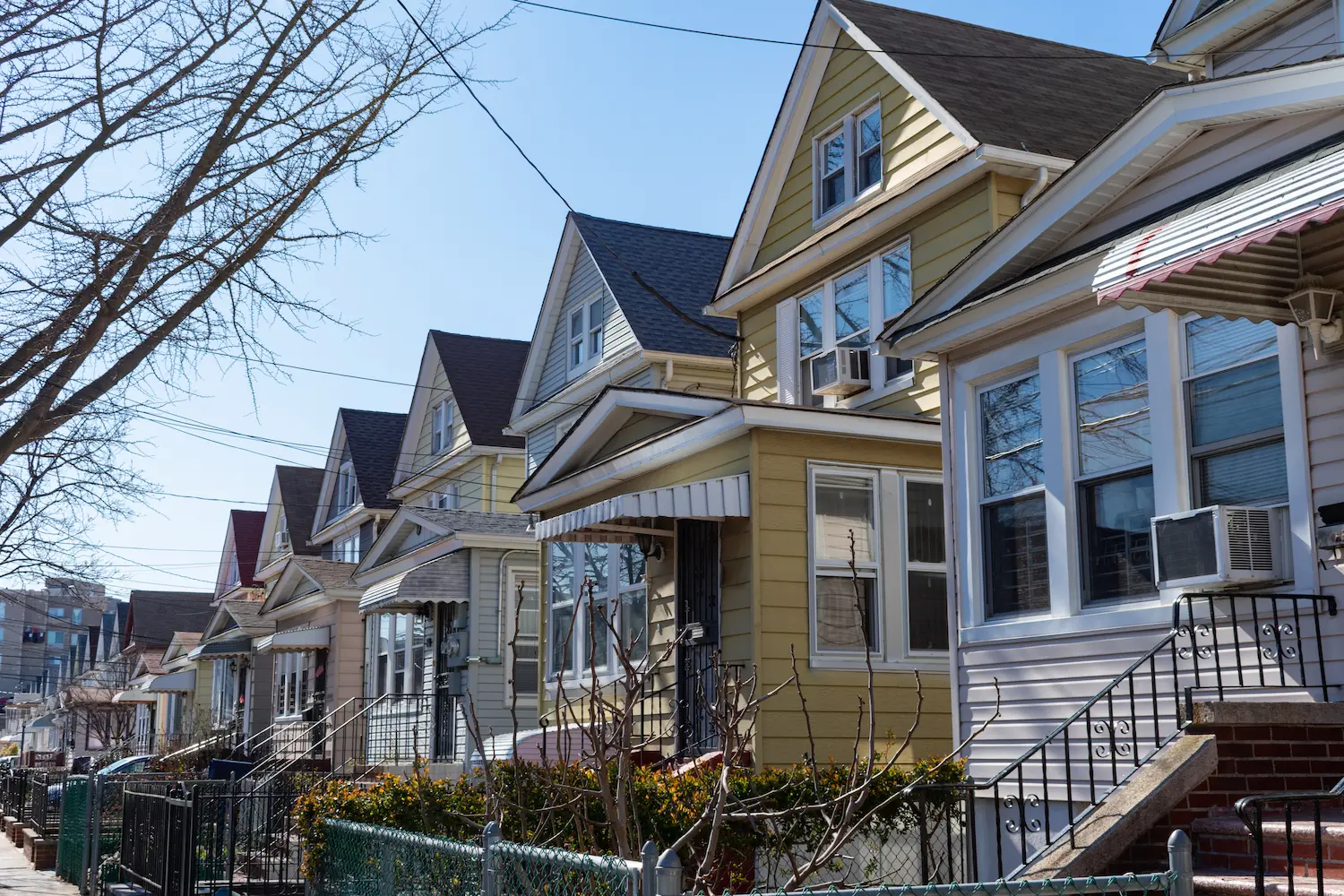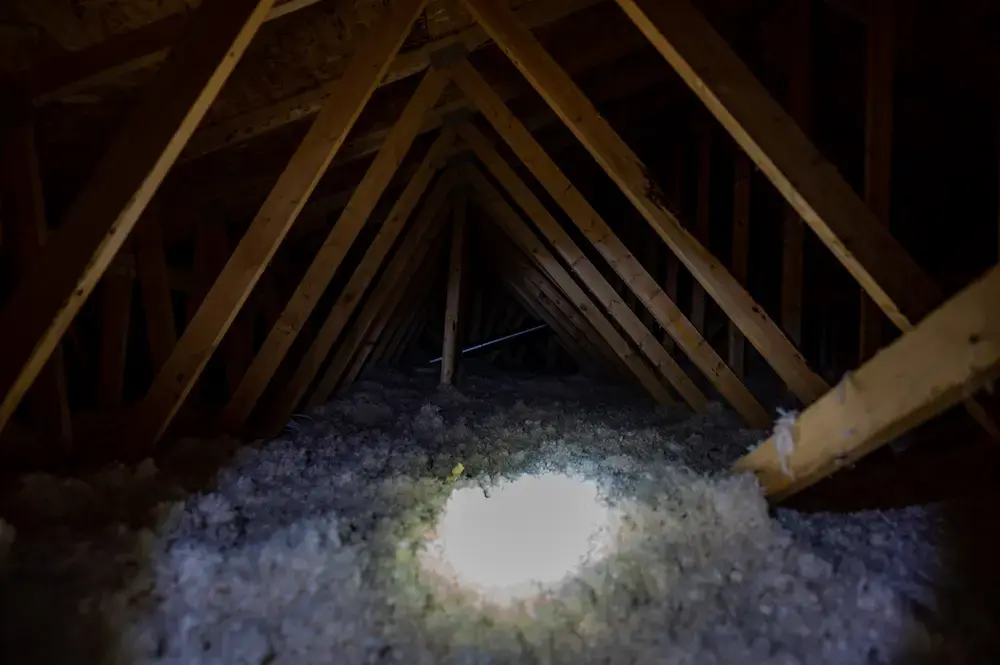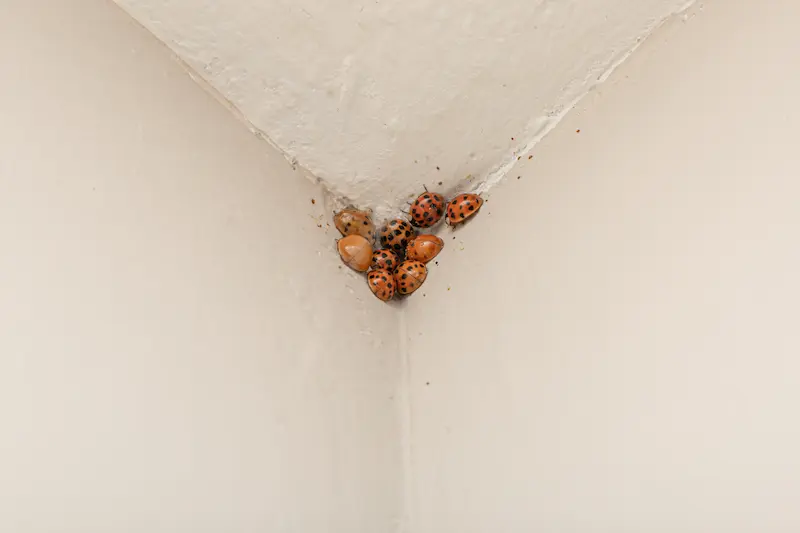Those large bees buzzing around your deck or eaves are probably carpenter bees. Unlike honeybees, they don’t live in colonies and are generally non-aggressive. In spring and early summer, they bore into untreated wood to build nests. Piles of rough sawdust under small holes often reveal their presence. Males are stingless, and females sting only if provoked, but their wood-boring can be obvious and damaging.
Twin Forks Pest Control® tackles carpenter bee issues before they can damage your property. Our experts identify active areas, apply targeted treatments, and protect against future infestations.
The Real Effects of Carpenter Bee Damage on Your Home
Repeated visits from carpenter bees can quickly worsen wood damage. Small holes and scratches can escalate into serious problems, leading to:
- Weakened Railings: Carpenter bees often target porch and balcony railings. As they tunnel into the wood, the structure slowly loses strength and stability, increasing the risk of collapse or injury if not addressed.
- Damaged Steps: Wooden steps can become hollowed out over time due to carpenter bee activity. This hidden damage may cause steps to crack or break, creating a safety hazard similar to weakened railings.
- Distinct Entry Holes: Carpenter bee entrances are smooth, round holes roughly the size of a nickel. These are typically found in exposed wood such as rafters, eaves, or under decks, marking where bees begin nesting.
- Compromised Support Beams: Structural beams can be gradually weakened when carpenter bees bore into them. If left untreated, this may cause warping or partial collapse, though early warning signs often appear before serious damage occurs.
- Visible Wood Damage: Carpenter bee activity may leave grooves, small holes, or etched marks on wood surfaces. Unlike termites, these bees leave their work exposed, making the signs easy to spot.
Carpenter bees can cause major damage quickly if left unchecked. Reach out to a bee, wasp, hornet, and yellow jacket exterminator as soon as you notice signs. Our skilled team uses safe, effective techniques to remove the pests and prevent future infestations. We respond promptly whenever you call.
Identifying Carpenter Bees: What to Look For
At first glance, carpenter bees and bumblebees look strikingly similar, with fuzzy black heads and plump bodies. The key difference lies in the abdomen: carpenter bees are sleek and shiny, while bumblebees are covered in hair. Being able to spot this detail can help you identify infestations before they become serious.
Carpenter bees are drawn to untreated or weathered wood, often using decks, porches, and sheds as nesting sites. Their hidden tunnels can slowly compromise wood strength over time. Even small signs of activity can lead to more severe problems if ignored.
Unlike hornets or wasps, carpenter bees never build external hives or nest in the soil. They burrow directly into wooden structures, so acting quickly is the best way to protect your home from damage.
How to Spot Carpenter Bee Activity
Keep an eye on your wooden structures for evidence of carpenter bees. Holes, grooves, and other markings can signal an infestation, and early action helps prevent costly damage. Watch for these indicators:
- Visible Holes: Carpenter bees start by creating round holes about half an inch wide in untreated or exposed wood. These openings mark the beginning of their tunnels.
- Fan-Shaped Marks: Semi-circular or fan-like patterns around the entrance holes are a clear sign of ongoing tunneling activity.
- Wood Shavings: Small piles of sawdust or wood fragments often collect beneath the holes as the bees dig through the wood.
- Internal Sounds: Faint buzzing or scratching noises coming from inside wooden structures indicate active bees within the wood.
Understanding the Harm Carpenter Bees Can Do
The harm caused by carpenter bees goes beyond the holes you can see. Their larvae make subtle noises within the wood, drawing attention from birds and other creatures that feed on them. Over time, these hidden activities can compromise structural integrity.
As wildlife attempts to reach the larvae, the small tunnels can expand into larger, more destructive openings. Acting quickly helps prevent both the direct damage from the bees and the additional harm caused by predators searching for food.
Avoid Costly Damage from Carpenter Bees with Twin Forks Pest Control®
Protecting your home from carpenter bees and the damage they cause requires professional pest control. These pests can silently weaken wooden structures over time, making early intervention crucial. Untreated infestations in Southold and Southampton can be expensive, but Twin Forks Pest Control®’s experts identify activity, apply precise treatments, and prevent future problems.
Contact Twin Forks Pest Control® today for expert protection against carpenter bees and a variety of common pests.




